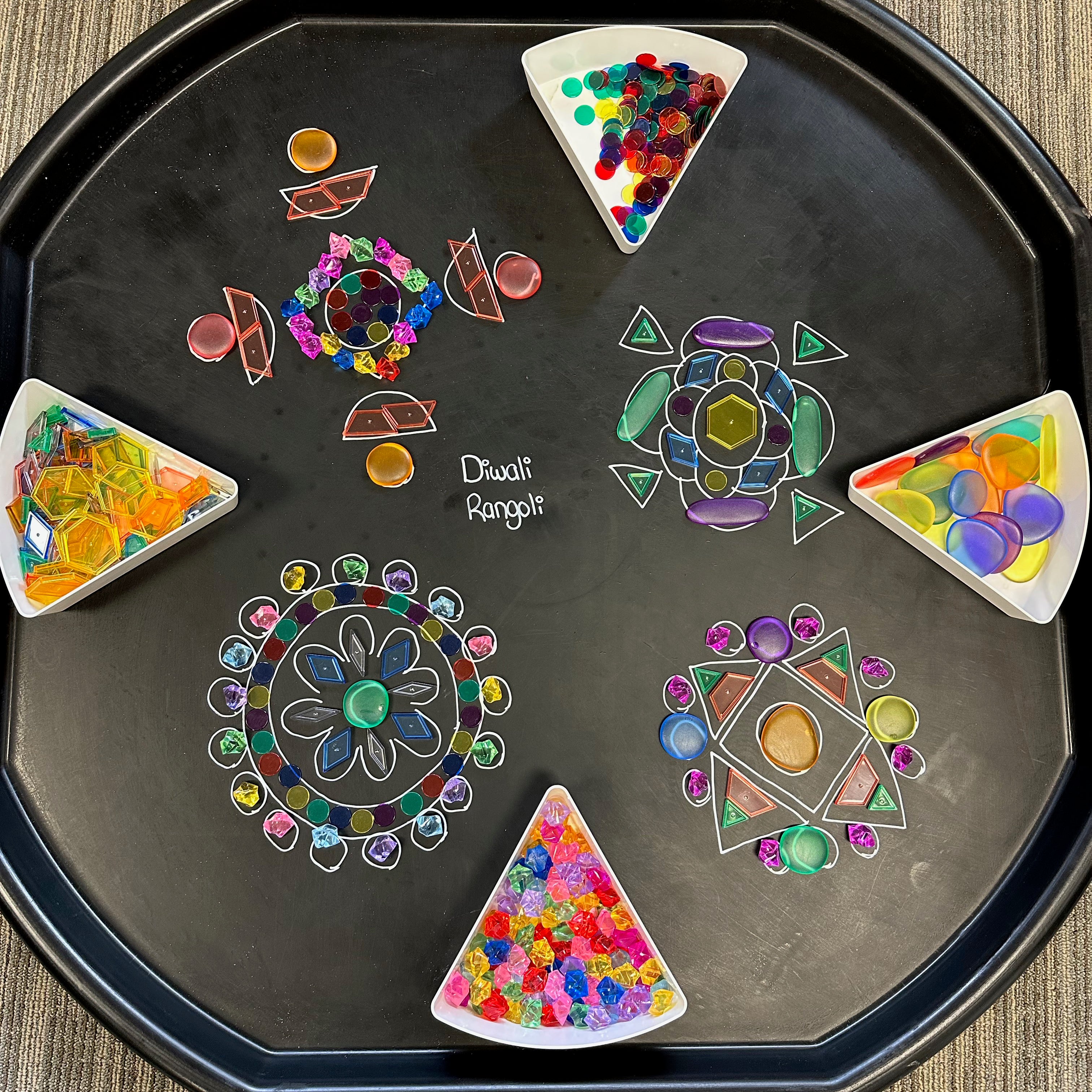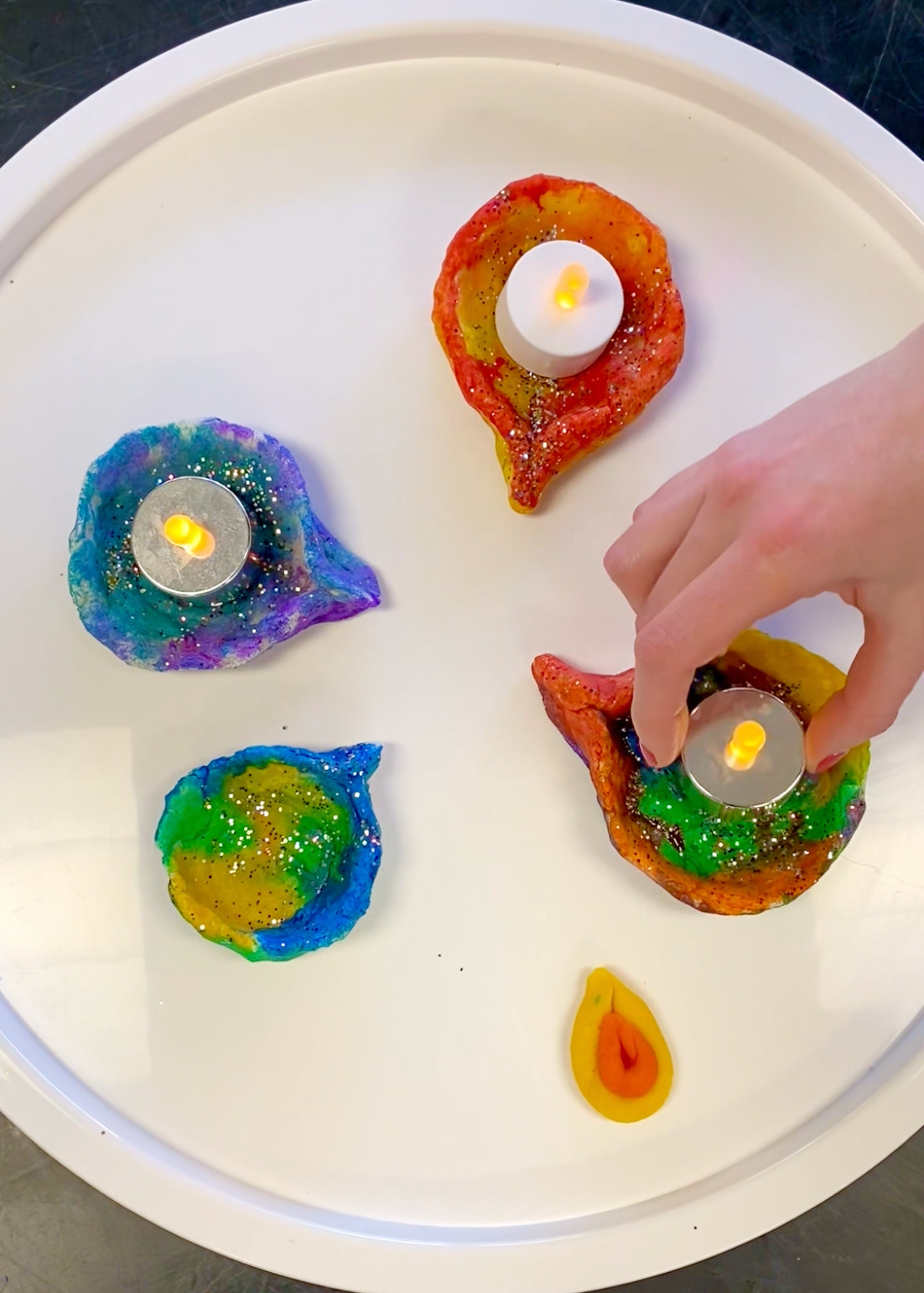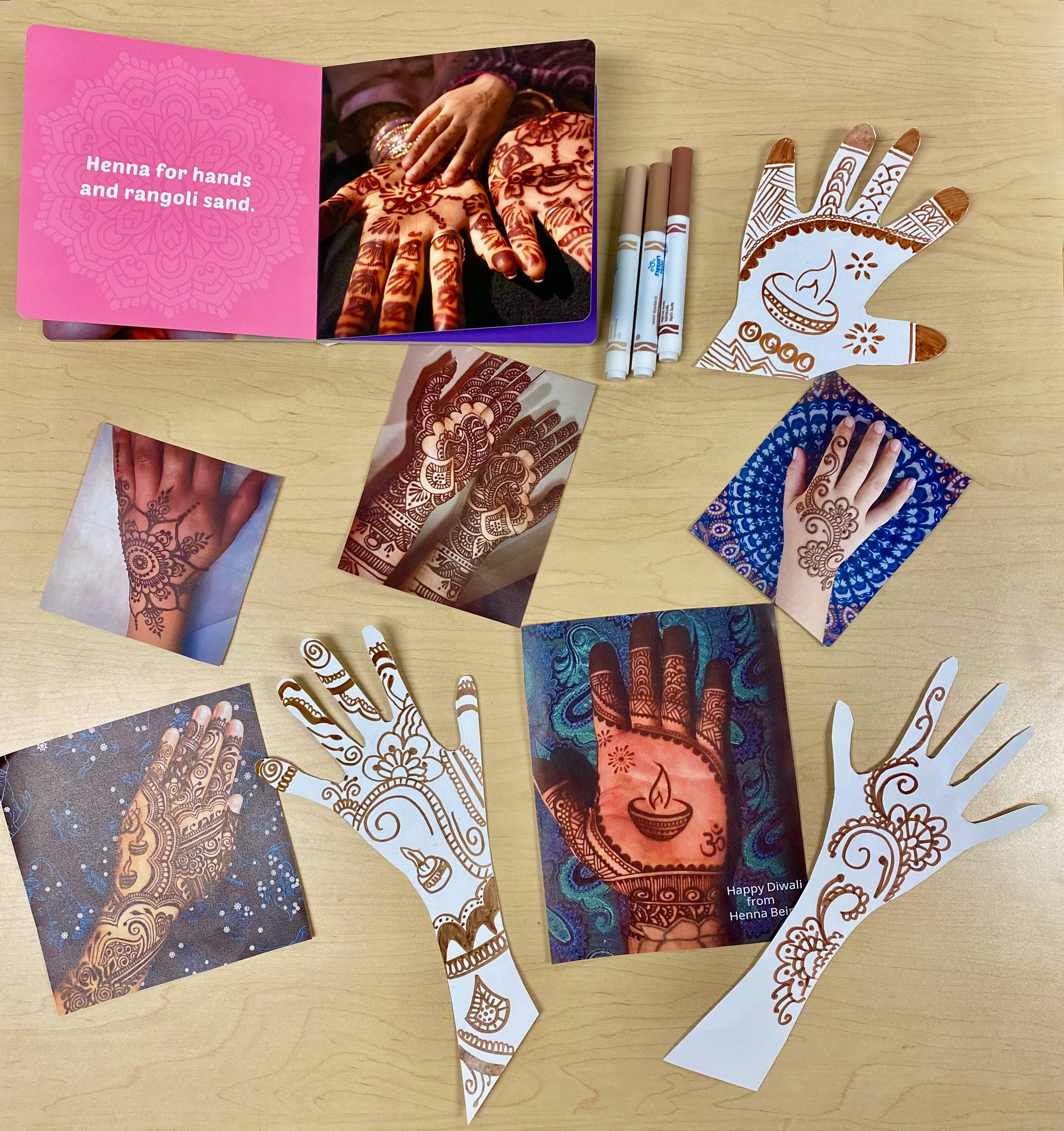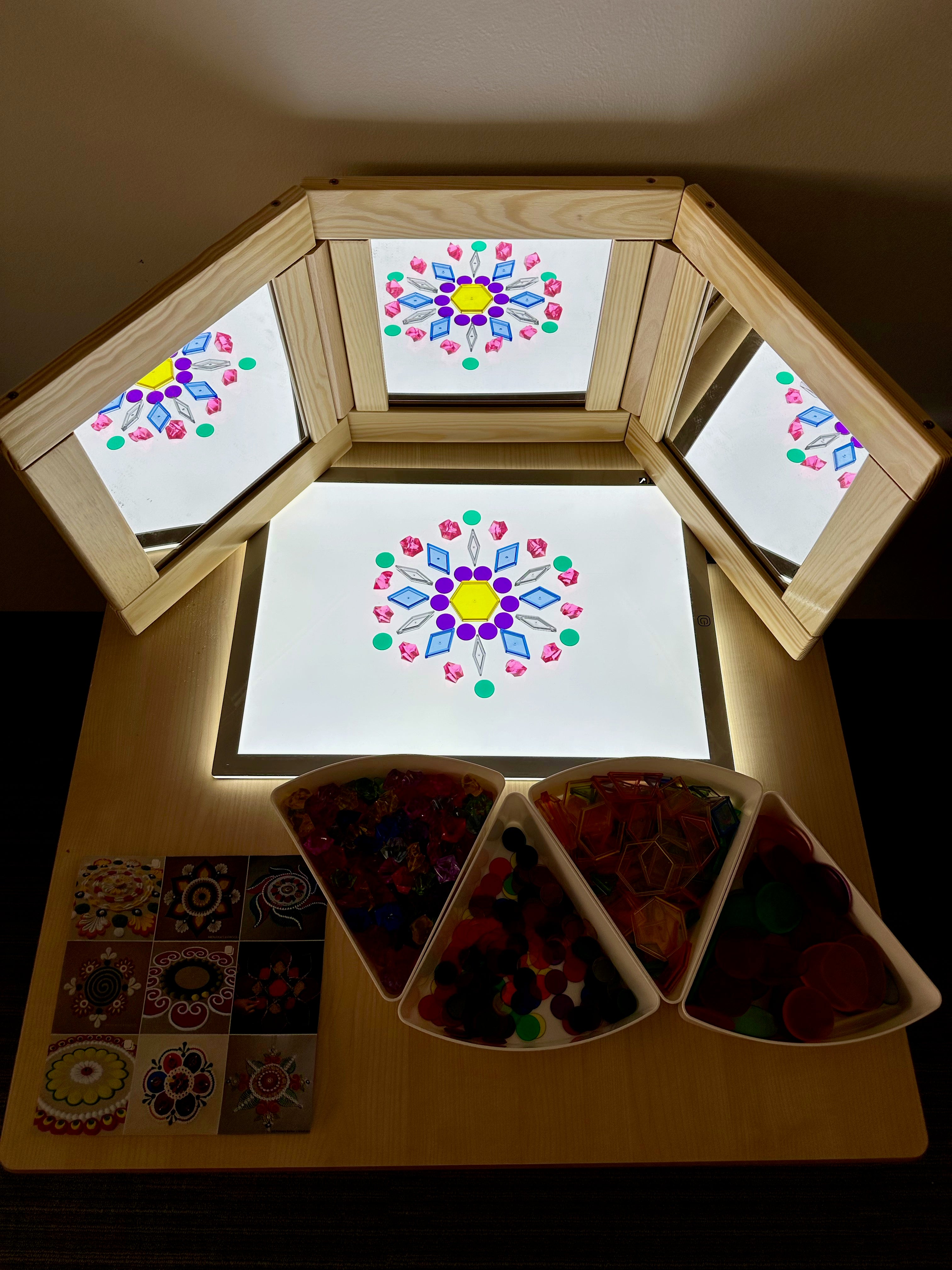

Celebrating Diwali Through Crafts and Play-Based Learning: A Guide for Parents and Educators
Diwali, the Festival of Lights, is one of the most celebrated holidays in India and across the world. It’s a time of joy, reflection, and togetherness, and it's also a wonderful opportunity to introduce children to the rich cultural traditions of Diwali through play-based learning. Incorporating diversity and inclusion into early childhood education is essential for raising globally minded, empathetic children, and Diwali offers an exciting way to do just that.
In this blog, we’ll explore what Diwali is, why it’s important to learn about, and how you can celebrate with fun, hands-on activities that promote both creativity and early childhood development.
What is Diwali?
Diwali, also known as Deepavali, is a five-day festival celebrated by millions of people around the world, particularly in India. It marks the triumph of light over darkness and good over evil. While Diwali has roots in Hindu mythology, it is also celebrated by Jains, Sikhs, and Buddhists, each giving the holiday its own unique significance.
Traditionally, families clean their homes, light oil lamps (diyas), create rangoli (intricate designs made from colored powders or flowers), and share sweets and gifts. It’s also a time for storytelling, where families share tales of gods, goddesses, and ancient folklore, making Diwali a celebration rich in cultural and educational value.
Why Celebrate Diwali with Children?
Introducing children to different cultural festivals like Diwali is important for fostering diversity and inclusion from an early age. By learning about traditions from around the world, children develop respect for other cultures and a sense of belonging in a global community. Engaging with these traditions through crafts and play-based learning helps make the experience fun, accessible, and memorable.
Celebrating Diwali with children not only broadens their cultural awareness but also enhances key developmental areas, including:
- Social-Emotional Learning: Understanding and celebrating different traditions helps children develop empathy, respect, and a deeper appreciation for others.
- Cognitive Development: Diwali activities like crafting and storytelling promote cognitive skills such as pattern recognition, problem-solving, and creativity.
- Fine Motor Skills: Hands-on activities like creating rangoli or making diyas improve fine motor skills, hand-eye coordination, and dexterity.
- Language Development: Learning new words related to Diwali, such as "rangoli," "diya," and "sweets," enhances vocabulary and language comprehension.




Playdough Diwali Diyas
Can you create a diya for Diwali? This invitation to create allows children to be creative and learn about the cultural celebration of Diwali.
Diwali also known as Deepavali is the Festival of Lights! Diwali symbolizes the spiritual “victory of light over darkness, good over evil and knowledge over ignorance.
The warm, bright glow emitted from a diya is considered auspicious - it represents enlightenment, prosperity, knowledge and wisdom. Diyas represent the triumph of light over dark, good over evil with the most notable example of this being on the day of Diwali!
To create your Diya make salt playdough. Once your dough is made, separate it into four separate balls. Take one and use a rolling pin to gently flatten it, place a tea light in the middle and encourage children to pinch the edges of the dough upwards to form a bowl shape. Once you have your bowl shape take one end and pinch it together to complete the shape of the diya. Place in the oven and bake (pro tip convection works best) at 200 for 2 hours or allow your playdough to dry overnight!
When ready paint your diya all bright colours and then add some glitter! Place tea lights in them once dry and talk abuot the significance of light and diyas for diwali!
Henna Hands for Diwali
Diwali is taking place on Monday October 24th this year! Diwali also known as Deepavali is the Festival of Lights.
Diwali symbolizes the spiritual “victory of light over darkness, good over evil and knowledge over ignorance!
Often during Diwali you will see women with mehndi also known as henna! It’s a body art tradition where intricate patterns are drawn onto the hands and arms. Mehndi is part of the celebration of Diwali, it symbolizes health, luck and positive energy.
Mehndi or Henna is a paste made from leaves of the Henna plant. The leaves are dried, crushed and mixed with essential oils and lemon juice to form a paste. The paste is then applied to the skin in a similar way to icing in a piping bag. Once the paste dries, it is then dusted off and leaves an orange stain on the top layer of the skin!
Each design carries a unique meaning!
-Floral designs – flowers in henna represent happiness and joy
-Paisley designs – possibly the most common type of henna tattoo design, these symbolize luck
-Sahasrara – the crown chakra in Hindu tradition, it’s a lotus-like flower with hundreds of petals, traditionally arranged in 20 layers. It symbolizes purity and the unity of one’s soul with the divine


Light Panel Loose Parts Rangoli
Can you create Rangoli using colourful loose parts? This loose parts invitation allows children to be creative and learn about the cultural celebration of Diwali. Diwali also known as Deepavali is the Festival of Lights! Diwali symbolizes the spiritual “victory of light over darkness, good over evil and knowledge over ignorance.
The rangoli represents the happiness, positivity and liveliness of a household, and is intended to welcome Lakshmi, the goddess of wealth and good luck. Rangoli patterns are bright, colourful and beautiful designs that are traditionally made on the floor and created using materials such as colored rice, dry flour, colored sand or flower petals. Rangoli designs are generally complicated because it is believed that the negativity present around us gets caught in the complexity of the rangoli design and does not enter the house!


Decorate Your Own Rangoli
Can you create Rangoli using colourful? This invitation and process art craft to create allows children to be creative and learn about the cultural celebration of Diwali. Diwali also known as Deepavali is the Festival of Lights! Diwali symbolizes the spiritual “victory of light over darkness, good over evil and knowledge over ignorance.
The rangoli represents the happiness, positivity and liveliness of a household, and is intended to welcome Lakshmi, the goddess of wealth and good luck. Rangoli patterns are bright, colourful and beautiful designs that are traditionally made on the floor and created using materials such as colored rice, dry flour, colored sand or flower petals. Rangoli designs are generally complicated because it is believed that the negativity present around us gets caught in the complexity of the rangoli design and does not enter the house!
How Diwali Crafts and Activities Promote Diversity & Inclusion
Celebrating Diwali through crafts and activities is not only an opportunity for creative play but also a powerful way to promote diversity and inclusion in early childhood settings. Children exposed to different cultures and traditions from a young age are more likely to develop a global mindset, showing respect for the beliefs and customs of others. This cultural awareness lays the foundation for inclusive attitudes as children grow older.
By incorporating Diwali activities into your play-based learning routines, you create an environment where all children feel seen, valued, and respected—whether they celebrate Diwali themselves or are learning about it for the first time.
Diwali provides a vibrant opportunity to bring diversity, inclusion, and cultural awareness into play-based learning. Whether you’re a parent looking to celebrate at home or an educator eager to introduce Diwali into the classroom, these activities are designed to foster creativity, social-emotional learning, and fine motor skills while honoring one of the world’s most joyful festivals. By making Diwali crafts, hearing its stories, and engaging in its traditions, children can not only enjoy the beauty of the holiday but also learn the valuable lesson of light overcoming darkness—an idea that resonates across all cultures.
This Diwali, let’s illuminate our children’s world with creativity, learning, and a deeper appreciation for the traditions that bring us all together.

